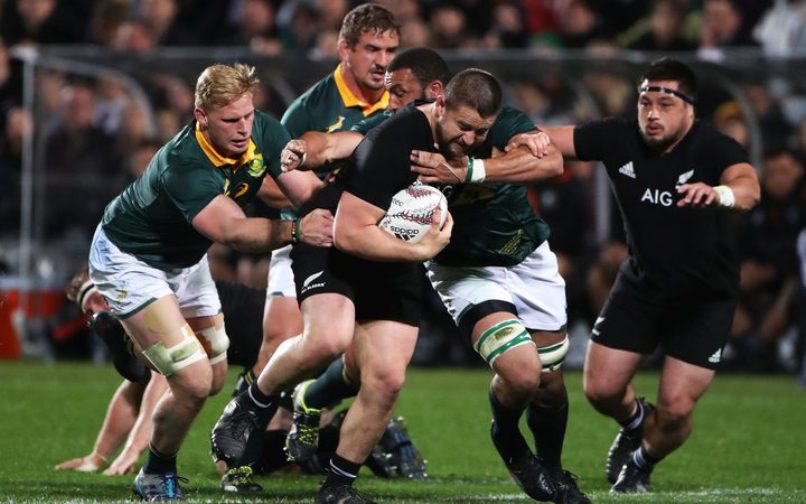
After the All Blacks destroyed the Springboks in a 57-0 win in Auckland on 16 September, the fitness of the team in green and gold has once again come under scrutiny. While the New Zealand boys hardly looked like they were playing a hard game, the visitors were breaking out in a heavy sweat with numerous players seen gasping for air.
While their lacking confidence in their own attack saw the Springboks suffer from the get-go it is not the first time that the team’s overall fitness has been doubted: Coach Allister Coetzee has been ignoring the warning signs of the Bok team for too long, resulting in the record-breaking defeat suffered.
Physical conditioning for rugby players is becoming increasingly important as the game is becoming faster and the players are getting bigger and stronger. Conditioning of players doesn’t only improve their game but also reduces the risk of injuries which can often be career-ending. Research has shown that speed, strength, power, agility, fitness and body size are all essential elements for the performance of a rugby player. The physical demands of rugby are staggering and great effort has to be made to ensure that the health and fitness levels of all players are at their optimum levels.
Improving your rugby strength and stamina
· Diet plays a very important role in rugby conditioning. If a player is overweight he will struggle to reach his full potential on the field. There are many diets that will help to shed weight fast, but the team nutritionists will best give advice on what options to consider. Healthy eating and exercise always go hand-in-hand regardless of whether you are a sports star or an Average Joe.
· Depending of the position played, the level of fitness required by rugby players may differ slightly with the backs generally needing to be more aerobically fit than the forwards who mainly rely on their strength in scrums. A simple aerobic test will easily be able to determine the fitness levels of players and training schedules can be implemented accordingly.
· A hugely diverse range of exercises are generally employed in rugby fitness and conditioning and may include running, swimming, cycling, HIIT training, cross training and field training exercises such as VO2 blocks or grids.
There is no doubt that fitter teams win more games. The coach together with the fitness trainers need to ensure that all players are in top form before they send them out onto the field. The last thing anyone wants to see is a team running out of energy during the last 10 minutes of the game and subsequently losing it, or even worse, losing steam as soon as the kick-off whistle blows, which is exactly what happened to the Springboks.
DISCLAIMER: The views and opinions expressed on this web site are solely those of the writers or contributors. These views and opinions do not necessarily represent those of www.sports247.my































